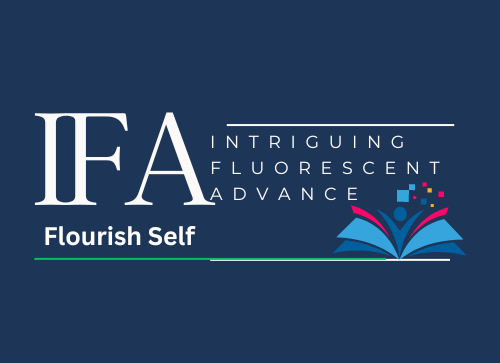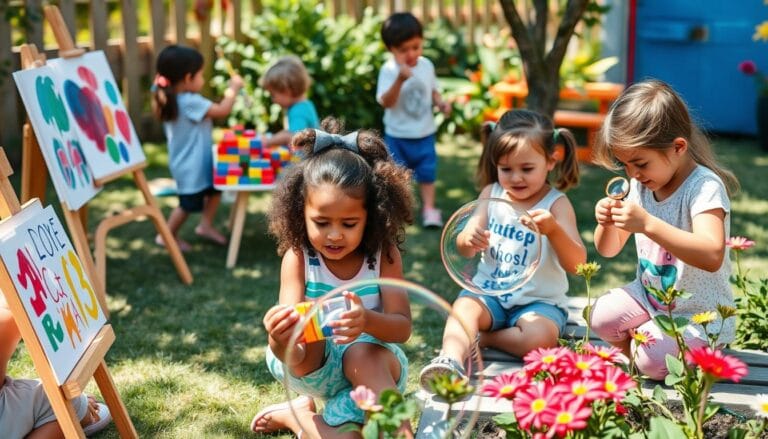
Child Development Theorists Shaping Young Minds
Child development theories are key to understanding how kids grow and learn. They help parents, teachers, and psychologists understand early childhood. By looking at the work of famous child development theorists, we learn a lot about how we grow and learn.
The field of child development is huge, with many theories about kids’ growth. These theories cover social, emotional, and cognitive development. They show us how kids learn, make friends, and deal with life’s challenges. By using these theories, we can make places where kids can grow well.
Important child development theorists include Sigmund Freud, Erik Erikson, Jean Piaget, and John Bowlby. Each of them had big ideas that changed how we see human growth and learning. For instance, Freud talked about how early life shapes us, while Erikson focused on the role of social relationships.
By studying these theorists, we get a better sense of how complex human development is. We see what affects a child’s growth. Knowing these theories helps us make a world where every child can reach their highest potential.
Key Takeaways
- Child development theories provide a framework for understanding how children grow, learn, and interact with the world.
- Influential theorists such as Freud, Erikson, Piaget, and Bowlby have shaped our understanding of early childhood development.
- Developmental theories focus on various aspects of growth, including social, emotional, and cognitive development.
- Applying the principles of these theories can help create nurturing environments that promote positive outcomes for children.
- Understanding child development theories is crucial for parents, educators, and psychologists working to support children’s growth and well-being.
The Importance of Studying Child Development
Understanding child development is key for parents, teachers, and caregivers. It helps us support young minds’ growth and well-being. By learning about cognitive, emotional, and social development, we see how children view and interact with their world. This knowledge helps us build supportive spaces for learning, emotional strength, and positive connections.
Child development theories give us a framework for understanding growth. They cover cognitive, emotional, and social development. Cognitive development is about learning and solving problems. Emotional development is about self-awareness, empathy, and managing feelings. Social development looks at how children make friends and follow social rules.
The goal of early childhood education should be to activate the child’s own natural desire to learn.
Studying child development helps us spot important milestones and stages. This lets us tailor education and parenting to meet children’s needs. For instance, knowing the value of play helps us create fun learning experiences that boost creativity and thinking.
Research also shows early experiences are crucial for a child’s future. The first years are when the brain grows fast, making children ready to learn and bond. Quality early education and nurturing environments set a strong base for success in school and life.
| Domain | Description |
|---|---|
| Cognitive Development | Focuses on how children acquire knowledge, problem-solving skills, and thinking abilities. |
| Emotional Development | Explores the formation of self-awareness, empathy, and emotional regulation. |
| Social Development | Examines how children learn to interact with others, form friendships, and navigate social norms. |
| Physical Development | Focuses on the growth and development of a child’s body, including motor skills and coordination. |
In conclusion, studying child development is vital for supporting children’s growth. By grasping the complexities of cognitive, emotional, and social development, we can foster learning, resilience, and positive relationships. This knowledge helps children reach their potential and succeed in a changing world.
Sigmund Freud’s Psychosexual Theory
Sigmund Freud, the founder of psychoanalytic theory, believed that childhood experiences shape our behavior. His work introduced the idea of psychosexual development. This theory says children go through stages, each focused on a different body part.
Freud said that at each stage, children face conflicts that are key to their growth. He thought the libido’s energy targets specific body parts during these stages. If a child doesn’t overcome these conflicts, it can lead to fixation in adulthood.
Freud’s Stages of Psychosexual Development
Freud’s theory outlines five stages of development:
- Oral Stage (0-1 years old): The libido is focused on the mouth, with sucking and biting as primary sources of pleasure.
- Anal Stage (1-3 years old): The libido shifts to the anus, with toilet training being a significant event. Positive experiences can lead to competence, productivity, and creativity in adulthood.
- Phallic Stage (3-6 years old): The libido is focused on the genitals. Boys experience the Oedipus complex and castration anxiety, while girls experience penis envy, according to Freud.
- Latency Stage (6-12 years old): Sexual energy is repressed, and children focus on intellectual pursuits and social interactions, crucial for developing social and communication skills.
- Genital Stage (13-18 years old): Occurring during puberty, this stage is marked by a strong sexual interest in the opposite sex and a balance between individual needs and the welfare of others.
Each stage is linked to a specific age, erogenous zone, and potential fixation consequences. Freud thought that completing each stage healthily would lead to a well-rounded personality. Unresolved conflicts could result in fixations that hinder development.
“The behavior of a human being in sexual matters is often a prototype for the whole of his other modes of reaction in life.” – Sigmund Freud
Freud’s theory has been criticized for its focus on heterosexual development and lack of empirical research. Yet, it remains influential in understanding human development. His ideas continue to shape psychotherapy and psychiatry, offering insights into the link between childhood and adult behavior.
Erik Erikson’s Psychosocial Theory
Erik Erikson was a famous psychoanalyst and developmental psychologist. He created a groundbreaking theory of psychosocial development. This theory has greatly influenced how we see human growth and identity formation.
Erikson’s theory builds on Sigmund Freud’s work. It shows how social interactions and experiences shape a person’s personality over their lifetime.
Erikson said people go through eight stages of development. Each stage has a specific psychosocial conflict to solve for a healthy sense of self. These stages start from infancy and go up to late adulthood.
Each stage is built on the success of the previous one. This means each stage is a stepping stone to the next.
Erikson’s Stages of Psychosocial Development
| Stage | Age Range | Psychosocial Crisis | Virtue |
|---|---|---|---|
| 1. Infancy | Birth to 18 months | Trust vs. Mistrust | Hope |
| 2. Early Childhood | 18 months to 3 years | Autonomy vs. Shame and Doubt | Will |
| 3. Preschool | 3 to 5 years | Initiative vs. Guilt | Purpose |
| 4. School Age | 6 to 11 years | Industry vs. Inferiority | Competence |
| 5. Adolescence | 12 to 18 years | Identity vs. Role Confusion | Fidelity |
| 6. Young Adulthood | 19 to 40 years | Intimacy vs. Isolation | Love |
| 7. Middle Adulthood | 40 to 65 years | Generativity vs. Stagnation | Care |
| 8. Late Adulthood | 65 years to death | Ego Integrity vs. Despair | Wisdom |
Each stage has a unique challenge. These challenges must be faced and solved to develop a strong sense of self. Success in these challenges leads to virtues like hope, will, and love.
These virtues help individuals face future challenges. They also help achieve a cohesive ego identity.
The most important endeavor is the striving for a sense of identity. It is only in adolescence that the individual can experience an identity crisis because it is the first time that physical development, cognitive skills, and social expectations coincide to enable young persons to sort through and synthesize their childhood identifications in order to construct a viable pathway toward their adulthood.
– Erik Erikson
Erikson’s theory highlights the importance of the adolescent stage. This stage, known as “Identity vs. Role Confusion,” is crucial for establishing a coherent sense of identity. It involves exploring personal values, beliefs, and goals.
A successful resolution of this stage leads to a strong sense of self. Failure can result in role confusion and a fragmented sense of self.
Erikson’s theory shows that development is lifelong and social interactions shape personality. His insights guide parents, educators, and mental health professionals. They help understand and nurture growth throughout a person’s life.
Behavioral Theories of Child Development
Behavioral theories of child development come from famous psychologists like John B. Watson, Ivan Pavlov, and B.F. Skinner. They say that the environment plays a big role in shaping behavior. Learning happens through classical and operant conditioning, where kids learn from what happens to them, like rewards or punishments.
Ivan Pavlov’s classical conditioning teaches us to link a new stimulus with a known response. B.F. Skinner’s operant conditioning shows how actions are shaped by their outcomes. This means behaviors can get stronger or weaker based on what happens next.
“Give me a dozen healthy infants, well-formed, and my own specified world to bring them up in and I’ll guarantee to take any one at random and train him to become any type of specialist I might select – doctor, lawyer, artist, merchant-chief and, yes, even beggar-man and thief, regardless of his talents, penchants, tendencies, abilities, vocations, and race of his ancestors.” – John B. Watson
The behavioral approach looks at what we can see and measure, not what we can’t. It says kids learn from their environment and how they’re rewarded. Key ideas include:
- Reinforcement: Making a behavior stronger with a good outcome or by removing a bad one.
- Punishment: Making a behavior weaker with a bad outcome or by removing a good one.
- Extinction: Making a behavior weaker by stopping the good outcome it used to get.
- Behavior modification: Changing behavior using rewards and punishments.
In schools, rewards and punishments are used to encourage good behavior and stop bad behavior. But, how well it works depends on each student. Critics say these methods ignore important thinking and individual differences.
| Behaviorist | Key Contribution |
|---|---|
| John B. Watson | Started behaviorism as a way to study psychology |
| Ivan Pavlov | Found classical conditioning |
| B.F. Skinner | Created operant conditioning |
Behavioral theories have given us useful insights into learning and growth. But, they have their limits. Today, we combine behaviorism with other areas like thinking, social, and emotional to understand children better.
Jean Piaget’s Cognitive Theory
Jean Piaget was a Swiss psychologist who changed how we see child development. He showed that kids think differently than adults. His theory explains how our thoughts and understanding of the world grow.
Piaget talked about schemas, which are mental actions we use to understand the world. He said kids go through four stages of thinking: Sensorimotor, Preoperational, Concrete Operational, and Formal Operational.
Piaget’s Four Stages of Development
Piaget’s stages are:
- Sensorimotor stage (Birth to 2 years)
- Preoperational stage (Ages 2 to 7)
- Concrete operational stage (Ages 7 to 11)
- Formal operational stage (Ages 12 and up)
Each child moves through these stages in their own time. This depends on how fast they grow and what they learn.
Sensorimotor Stage
The Sensorimotor stage is from birth to 18-24 months. Kids learn by doing things like sucking, grasping, and looking. They also learn that things still exist even when they can’t see them.
Pre-Operational Stage
This stage is from ages 2 to 7. Kids start to think symbolically but have trouble seeing things from others’ views. They also struggle with understanding that things stay the same even if they change.
Concrete Operational Stage
This stage is from ages 7 to 11. Kids start to think logically about real events. They learn to solve problems using logic. This is a big step in their thinking.
Formal Operational Stage
This stage is for teens and adults. They start to think abstractly and solve problems in their minds. They also explore big ideas like morality and politics.
| Stage | Age Range | Key Characteristics |
|---|---|---|
| Sensorimotor | Birth to 2 years | Object permanence, learning through senses and motor actions |
| Preoperational | 2 to 7 years | Symbolic thought, egocentrism, lack of conservation |
| Concrete Operational | 7 to 11 years | Logical thinking, understanding conservation and inductive reasoning |
| Formal Operational | 12 years and up | Abstract thinking, hypothetical reasoning, scientific problem-solving |
Remember, kids progress at their own pace through these stages. Things like culture and gender can also affect their journey.
“The goal of education is not to increase the amount of knowledge but to create the possibilities for a child to invent and discover, to create men who are capable of doing new things.” – Jean Piaget
Piaget’s ideas have greatly influenced how we view child development. He showed that kids need to explore and interact with their world to grow.
John Bowlby’s Attachment Theory
John Bowlby was a famous British psychologist. He created the attachment theory, which shows how early emotional bonds shape a child’s behavior and survival instinct. Born on February 26, 1907, in London, England, Bowlby studied psychology at Trinity College, Cambridge. He also earned his medical degree from University College Hospital, London.
Bowlby’s theory says children are born needing to form close bonds with their caregivers. These bonds help children feel safe and develop their sense of self. Bowlby thought that the quality of these early bonds greatly affects a child’s future relationships and well-being.
“The propensity to make strong emotional bonds to particular individuals is a basic component of human nature.” – John Bowlby
Bowlby said the first 2.5 years are key for forming attachments. He stressed the need for a primary caregiver, usually the mother, to provide constant care in the first two years. He believed that any disruptions in this attachment could cause lasting harm, known as maternal deprivation.
| Attachment Phase | Age Range | Characteristics |
|---|---|---|
| Pre-attachment | Birth – 6 weeks | Infants respond indiscriminately to caregivers |
| Attachment-in-making | 6 weeks – 6-8 months | Infants begin to show preference for primary caregiver |
| Clear-cut attachment | 6-8 months – 18 months | Infants display separation anxiety and stranger wariness |
| Reciprocal relationships | 18 months – 2 years and beyond | Children develop more complex and mutual relationships |
Bowlby’s study on 44 juvenile delinquents, known as the “44 Thieves” study, supported his maternal deprivation hypothesis. The study found that long separations from caregivers in early years led to affectionless psychopathy. Among the 14 identified as affectionless psychopaths, 12 had been separated from their mothers for more than six months in their first two years. Only 5 out of 30 children not classified as affectionless psychopaths had similar separations.
Mary Ainsworth built on Bowlby’s work, identifying four main attachment styles in 1978. These styles reflect the quality of early interactions between child and caregiver, shaping their views of self, others, and relationships.
- Secure attachment: Characterized by trust, comfort, and confidence in the caregiver’s availability and responsiveness.
- Anxious-ambivalent attachment: Marked by uncertainty, clinginess, and a fear of abandonment.
- Avoidant attachment: Characterized by emotional distance, self-reliance, and a reluctance to seek comfort from the caregiver.
- Disorganized attachment: Characterized by a lack of a consistent attachment strategy, often resulting from unresolved trauma or inconsistent caregiving.
John Bowlby’s attachment theory has greatly influenced our understanding of child development. It highlights the importance of early emotional bonds and the dangers of maternal deprivation. Bowlby’s work has shaped parenting practices, child welfare policies, and therapy aimed at promoting healthy development in children.
Arnold Gesell’s Maturational Theory
Arnold Gesell, a famous developmental psychologist, introduced his maturational theory in 1925. It has greatly influenced how we raise children and teach in schools. Gesell believed that genetics play a big role in how children grow, following a set path.
Gesell’s theory is based on three main points: (a) development is rooted in biology, (b) good and bad years alternate, and (c) body types shape personality. He found that how fast children grow mainly depends on their nervous system’s growth.
Gesell thought that development follows a set order, like how the body grows from head to toe. He said that differences in growth rates come from genetics, causing variations in when children reach milestones.
Gesell’s Developmental Milestones
Gesell was a pioneer in studying child development. He used new methods like photography and observation through mirrors. His work, the Gesell Development Schedules, outlined key developmental stages in children.
Gesell believed that children’s growth involves balancing opposite tendencies. He also noticed that children often show uneven motor skills, like the tonic neck reflex. He thought that even newborns could control their own growth, showing self-regulation.
Even though Gesell’s theory was influential in teaching reading, it has its critics. It focuses too much on genetics, which can make understanding children’s differences hard. This might lead to oversimplifying problems like reading issues or ADHD.
Despite the criticisms, Gesell’s theory still impacts developmental psychology. It guides how we evaluate child development, design educational programs, and help children early on. Yet, we must also consider the theory’s limits and the role of environment in child growth, as critics and new research suggest.
The reception of Arnold Gesell’s Maturational Theory has sparked debates, showing the complexity of developmental theories and their practical use.
Understanding both the good and bad of Gesell’s theory helps us see its historical value. It shows the need for a more complete view of child development, including genetics and environment. His work has inspired ongoing research and new ideas in developmental psychology. As we learn more, we can better support children’s growth, helping them reach their full potential in a changing world. By resolving family conflicts and creating a supportive environment, we can help children grow and develop in their own unique way.
Urie Bronfenbrenner’s Ecological Systems Theory
Urie Bronfenbrenner’s theory changed how we see child development. It shows how people and their surroundings interact. This idea is used in many fields, like psychology and education. It looks at five main systems: micro, meso, exo, macro, and chrono.
The microsystem is about a person’s closest surroundings. This includes family, friends, and teachers. These relationships are key for a child’s growth.
The mesosystem looks at how different microsystems connect. For example, good communication between parents and teachers can help a child do better in school.
The exosystem affects us indirectly. It includes things like government and media. These can change how families work and how children grow.
The macrosystem is the biggest part. It includes things like culture and technology. These big influences shape our lives and chances.
The chronosystem is about how time affects us. It includes life events and changes over time. Both big milestones and unexpected events can shape a child’s life.
“The understanding of human development demands going beyond the direct observation of behavior on the part of one or two persons in the same place; it requires examination of multiperson systems of interaction not limited to a single setting and must take into account aspects of the environment beyond the immediate situation containing the subject.”
– Urie Bronfenbrenner
Bronfenbrenner’s theory shows the importance of many factors in child development. It helps us see how people and their surroundings affect each other. Creating supportive environments is key for a child’s growth.
This idea has shaped education, with programs like Head Start. These programs help children by focusing on their families and communities. They aim for complete development and success.
Urie Bronfenbrenner’s theory has greatly influenced child development. It teaches us to look at all the factors that shape a child’s life. By understanding these, we can build better environments for children to grow and learn.
Lev Vygotsky’s Sociocultural Theory
Lev Vygotsky was a famous psychologist. He said that social interaction and culture are key in how we learn. He thought that skills like solving problems and paying attention come from talking and working with others.
Vygotsky talked about the zone of proximal development (ZPD). This is the area where a child can’t do something alone but can with help. It shows how important it is to have someone to guide you when you’re learning.
He also mentioned the more knowledgeable other (MKO). This could be a teacher, parent, or even a computer program. The MKO helps by showing and guiding, helping the learner grow. As they learn more, they can help others, creating a learning community.
“Through others, we become ourselves.” – Lev Vygotsky
Vygotsky said that tools like language and art are learned through social interactions. These tools help us think better and grow up in our culture.
His ideas have changed how we teach in schools. Teachers now use methods like scaffolding and group learning. This helps students learn better together.
- Scaffolding: Providing support and structure to learners throughout the learning process
- Organizing students into varying skill-level groups
- Using prompts to enhance learning
But, using these methods can be hard. Teachers need to know each student’s level and adjust their teaching. They also need time and resources to help each student.
Vygotsky also believed in the power of play. He thought play helps kids learn and grow. Through play and social experiences, kids develop important skills and adapt to their world.
Child Development Theorists and Their Lasting Impact
Child development theorists have greatly changed how we see children’s growth and learning. Their work has shaped how we raise kids and teach them in schools. It has also influenced research on how children develop psychologically. Their ideas help professionals today, guiding them in nurturing young minds.
Urie Bronfenbrenner’s work in the 1970s and 2005 is key. He showed how important relationships are in a child’s life, especially with technology. The EU Kids Online project uses his ideas to study how technology affects kids.
Albert Bandura’s work on aggression and prosocial behavior is also significant. He showed how media can influence children’s behavior. His theories help us understand how media shapes young minds.
Lev Vygotsky believed learning is a social process. He said social interactions are crucial for children’s development. Recent studies support his ideas, showing media can help children learn and grow.
“Children are already learning at birth, and they develop and learn at a rapid pace in their early years. This provides a critical foundation for lifelong progress, and the adults who provide for the care and education of children bear a great responsibility for their health, development, and learning.” – National Association for the Education of Young Children
Jean Piaget’s stages of development are well-known. He showed how children think based on their age. His ideas are still used today in media research, helping us understand children’s media interactions.
| Theorist | Theory | Key Concepts |
|---|---|---|
| Urie Bronfenbrenner | Ecological Systems Theory | Microsystem, Mesosystem, Exosystem, Macrosystem, Chronosystem |
| Albert Bandura | Social Learning Theory | Observational Learning, Reciprocal Determinism, Self-Efficacy |
| Lev Vygotsky | Sociocultural Theory | Zone of Proximal Development, Scaffolding, Social Interaction |
| Jean Piaget | Cognitive Development Theory | Sensorimotor, Preoperational, Concrete Operational, Formal Operational |
The work of these theorists is a foundation for ongoing research. Their ideas help parents, educators, and caregivers support children’s growth. This support shapes the future of our society.
Conclusion
Influential child development theorists have greatly changed how we see children grow and learn. Their work, from Freud to Piaget, guides parents and teachers. It helps us understand how to support children’s development.
These theories show us how to help children in many ways. For example, we can use hands-on activities for kids who learn best by doing. This is important for their growth in all areas.
The work of these pioneers has made a big difference in many lives. By using their ideas, we can help children reach their highest potential. This way, we ensure a better future for all.

















